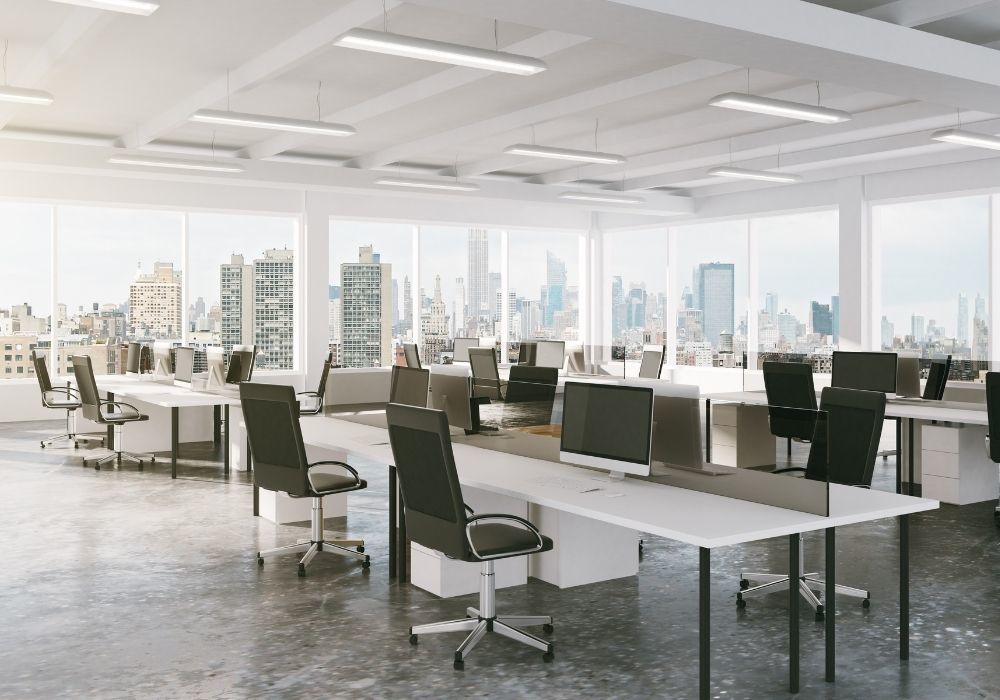The Return to Work
Depending on your location, you may have just returned to working in person, or you might be looking forward to the light at the end of a working from home tunnel. As organisations plan and enact their return to the office in 2021, what can employees and employers expect?
Hot Desking and Co-Working
There’s no question that returning to the office will look different now. As office spaces evolve to the new normal, the practice of sharing desks may become more widespread than ever, says Ian Worthy, Principal of Strategy at global office-design firm Unispace.
While there may be some hesitation around shared workspaces, Worthy suggests that there’s going to be a “dramatic” change in how people will work in the future and organisations need to have the willingness to embrace this concept.
“Our research suggests up to 90 per cent of people want to continue working from home at least one or two days a week,”
“With this new need for flexibility, it’s going to be hard for organisations to give people their own dedicated place to work, given there’s not going to be the same capacity of people in the office”, Worthy continued.
This may spark a third wave of the co-working evolution, according to Julian Waters-Lynch, entrepreneurship and innovation lecturer at the RMIT University School of Management.
“I think we might see a third wave of co-working because there’s going to be a new surge of people who work from home and for whatever reason find that’s not optimal. I think the third wave will reanimate where co-working started: meeting the social needs of home-based workers”.
Worthy also added that employees are indicating that they are more likely to limit their time in the office to team-based activities, collaboration learning and be immersed in the social aspects of the workplace. He doubts that employees will come back just to work individually.
While the concept of hot desking and co-working makes practical sense for both employees and employers in the new normal, strict cleaning measures and processes should remain top priority, for peace of mind and for the workplace to operate successfully.
Smart Offices
With touch-free biometrics set to become the norm for access control, smart offices will continue to evolve post pandemic.
Worthy explains that simple smart meters may be the first step in establishing a smart office. Used to manage a hot desk’s status, a series of lights would indicate whether it’s reserved, in use or in need of cleaning.
Tica Hessing, Human Geographer from global real estate services firm Cushman & Wakefield, also believes that the future is intelligent buildings,
“Embedded analytics will enable more efficient management of energy use and occupancy,” she says. For example, “In the short term, occupiers can temporarily shut down floors that aren’t being used; and in the longer term, they can ‘right-size’ their real-estate requirements for a distributed workforce.”
Further investment in virtual solutions will be key as office buildings evolve to a hybrid space. Redesigning the office so that no matter where employees are in the world, they still feel integrated in the office experience will be the next biggest challenge for employers.
The Role of AV and Digital Signage
As more organisations are likely to move to a hybrid working style, Signagelive believe that digital signage will become essential infrastructure in office buildings, creating opportunities for AV installers and providers.
Digital signage can be the ideal tool to ensure the correct message gets to the right person at the intended time, while considering different time zones, languages, branding guidelines and different viewing devices.
What Signagelive are deeming “The Connected Employee Experience”, sees digital signage at the forefront of keeping the workplace connected whether they are in-person or working from home through cloud-based technologies.
Sensored signs are predicted to become more common as automatic screen changes will show different alerts and dashboards depending on the location or the person it detects.
On a more common level, Signagelive believe there will be an increase in the use of digital signs for check-in, office maps and meeting room status’. This will enhance the employees return to work experience and make them feel more comfortable in the new normal.
This highlights the need for organisations to continue investing their AV technology to support a smooth return to work.
Parts of this article originally appeared on our sister events, Total Facilities’ and Security Exhibition websites.
Like what you’re reading? Receive the latest AV features straight to your inbox, subscribe to Convergence.
-
Register for Integrate 2024 Now!
- Register

